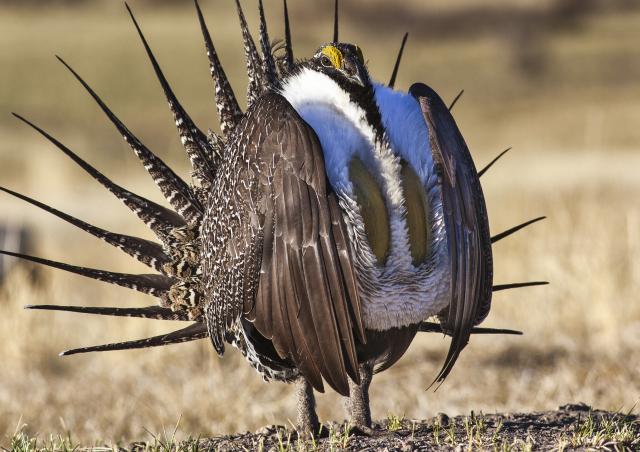Public input due on draft alternatives for managing greater sage-grouse habitat
Organization:
Media Contact:
WASHINGTON – The BLM today encouraged the public to submit any remaining comments on the draft environmental impact statement for updating plans for managing greater sage-grouse habitat on BLM-managed lands by midnight on Thursday, June 13, 2024. The 90-day public comment period will not be extended or re-opened.
Timely comments on the draft alternatives and analysis will help inform the final scientific analysis and proposed amendments for 77 resource management plans, covering up to 69 million acres of sagebrush habitat in portions of California, Colorado, Idaho, Montana, Nevada, North Dakota, Oregon, Utah and Wyoming.
Commenting on the draft alternatives and draft impact analysis is not limited to voting for one alternative or another. The most useful comments are specific and include suggested changes, present new information relevant to the draft, question with a reasonable basis the information or methodology in the analysis, or propose a reasonable alternative other than those analyzed.
Comments containing only opinion or preferences will be considered and included as part of the decision-making process. However, they will not receive a formal response from the BLM.
The final environmental impact statement may revise or combine alternatives from the draft in response to comments received and coordination with state, local and Tribal partners.
Please visit the BLM National NEPA Register for the full scoping notice and to provide feedback via the “Participate Now” option. Online submissions will be accepted until 11:59 p.m. MDT, Thursday, June 13, 2024.
For questions, please contact the BLM project team at BLM_HQ_GRSG_Planning@blm.gov.
The BLM manages more than 245 million acres of public land located primarily in 12 western states, including Alaska, on behalf of the American people. The BLM also administers 700 million acres of sub-surface mineral estate throughout the nation. Our mission is to sustain the health, diversity, and productivity of America’s public lands for the use and enjoyment of present and future generations.

